Metamorphosis is something everyone navigating the internet should encounter in one form or another. For us millennials, we have consumed the concept of metamorphosis in various means. Not only do we read about it in books, we’ve also seen it in entertainment media or games. (Pokémon and monster hunter series come into mind).
There is also a popular pet who undergoes this fantastic process? Can you guess which one? -it’s the salamander!
Salamanders are unique amphibians that undergo a special kind of transformation in their lifecycle known as metamorphosis. This process involves the salamander changing from its larval form, which typically lives in water, to a terrestrial adult stage.
During this transition, salamanders experience physical and behavioral changes that ultimately lead to their successful integration into land-dwelling habitats.
What Is Metamorphosis?
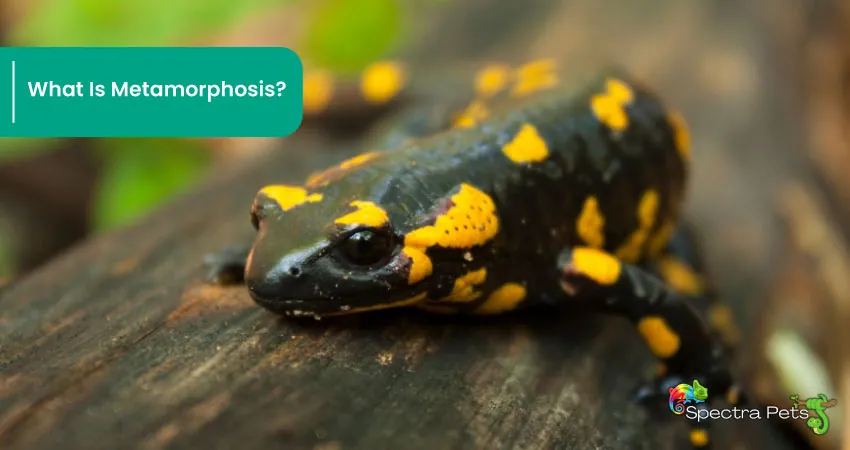
First of all, let’s get a better understanding of what metamorphosis actually is.
Metamorphosis is a fascinating and important process that enables these animals to adapt to their environment and survive in a variety of habitats. It is most commonly associated with insects, but it can also occur in other animals, such as amphibians and some species of fish.
This transformation is a testament to the adaptability and resilience of these animals and serves as a reminder of the incredible diversity of life on Earth.
What Amphibians Go Through Metamorphosis?
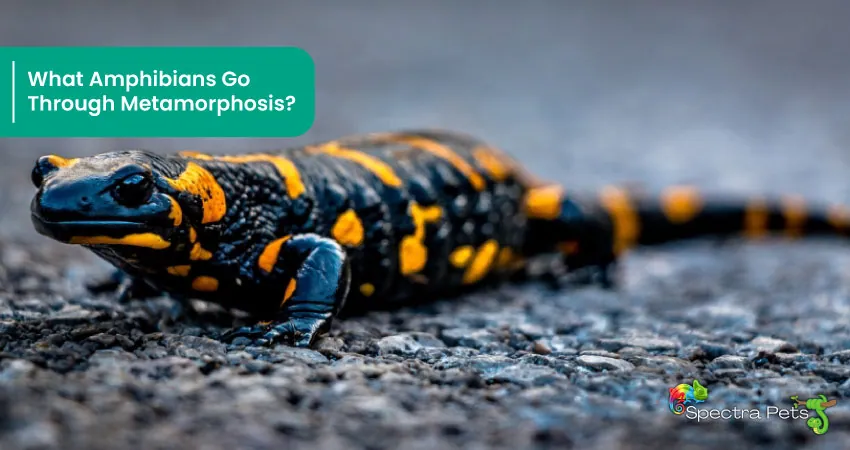
The metamorphosis of amphibians is the process by which these animals undergo physical and behavioral changes as they transition from a juvenile stage to an adult stage. This process is known as metamorphosis because it involves a transformation from one form to another.
Amphibians are a diverse group of animals that include frogs, toads, salamanders, and newts. They are characterized by their ability to live both on land and in water, and many species undergo metamorphosis as part of their life cycle.
The metamorphosis of amphibians begins when the eggs are laid and hatch into larvae, also known as tadpoles. These tadpoles are aquatic and have specialized features such as gills and a tail that allow them to swim and breathe underwater.
As the tadpole grows, it begins to undergo physical changes that enable it to adapt to life on land. The gills are replaced by the lungs, and the tail is absorbed into the body as the legs begin to develop. These physical changes are accompanied by behavioral changes as well, as the tadpole becomes more active and begins to explore its surroundings.
Once the metamorphosis is complete, the amphibian is fully adapted to life on land and is able to forage for food, reproduce, and defend itself from predators.
The process of metamorphosis varies among different species of amphibians, with some undergoing more dramatic transformations than others. For example, some species of salamander undergo a complete metamorphosis, in which the larval form is completely different from the adult form, while others undergo a more subtle metamorphosis, in which the larval form is similar to the adult form but with some differences in size and behavior.
What Is The Metamorphosis Of A Salamander?
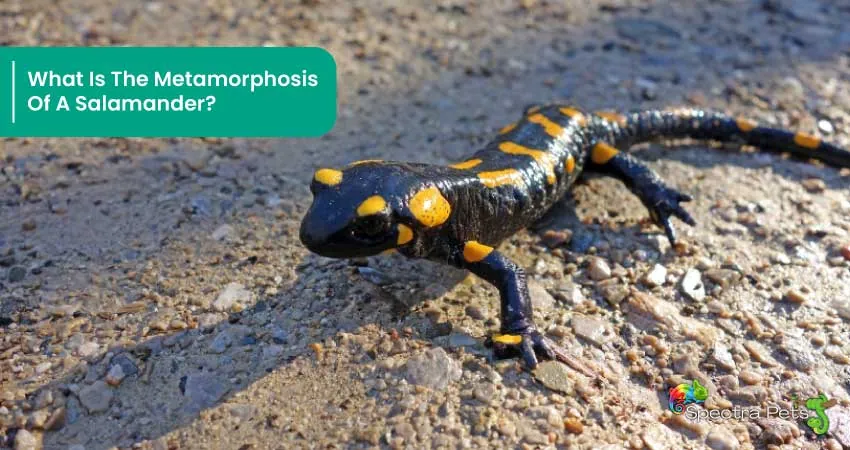
Now, let’s get a clearer vision of how salamanders morph. It is a little bit different from most other amphibians.
Salamander metamorphosis is the process by which a young salamander transforms from a larva into an adult. This process occurs over a period of time and involves a series of physical, physiological, and behavioral changes that allow the salamander to adapt to its environment and become a fully-fledged member of its species.
The process of metamorphosis begins when the salamander is still in its larval stage, which typically lasts for a few months to several years, depending on the species. During this time, the salamander is aquatic and has gills for breathing. It feeds on small invertebrates and algae and grows rapidly as it develops.
As the salamander matures, it begins to undergo a series of changes that will ultimately transform it into an adult. These changes may include the development of legs and the ability to crawl on land, the loss of gills and the development of lungs for breathing air, and the development of more complex behavior patterns.
One of the most striking aspects of salamander metamorphosis is the transformation of the skin. In the larval stage, the salamander’s skin is thin and translucent, allowing for efficient gas exchange. As the salamander matures, its skin becomes thicker and more opaque, providing greater protection against predators and environmental stresses.
Another key aspect of salamander metamorphosis is the development of reproductive organs. In many species, the salamander’s gonads (sex organs) do not fully develop until after the metamorphosis is complete. This means that adult salamanders are able to reproduce, while larvae are not.
However, there are some species of salamanders living in extreme conditions that are able to reproduce even in their larval stage. They have developed this trait to ensure the survivability of their species.
Does A Salamander Undergo A Complete Or An Incomplete Metamorphosis?
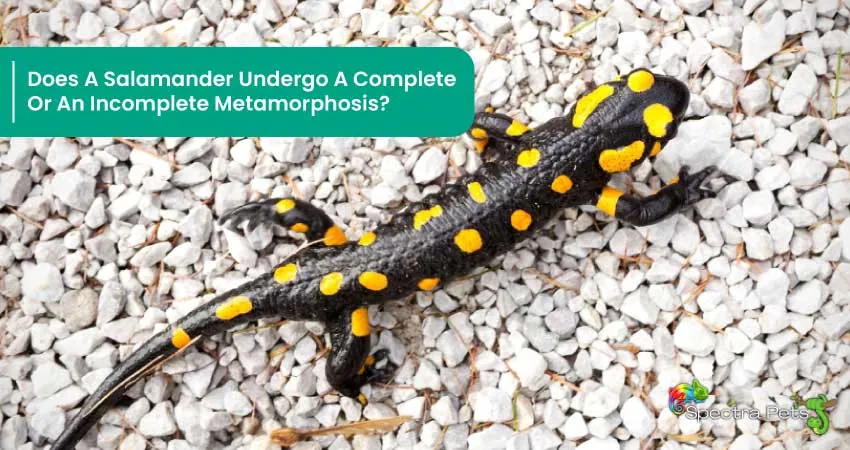
Complete metamorphosis is also known as holometabolism, and it is different from incomplete metamorphosis, which is also known as hemimetabolism. In insects, for example, hemimetabolism involves a gradual change in form as the insect grows rather than a distinct larval stage followed by a dramatic transformation.
Most salamanders undergo a complete metamorphosis. This means that they go through distinct stages of development, including an egg stage, a larval stage, and an adult stage.
During the larval stage, salamanders typically have gills and a tail, and they live in water. As they mature, they undergo metamorphosis and develop lungs, lose their gills and tail, and become terrestrial animals.
The process of metamorphosis can take anywhere from a few months to several years, depending on the species of salamander and environmental conditions.
Some salamanders do not undergo complete metamorphosis, meaning they do not have a larval stage and do not undergo a dramatic transformation from larva to adult as do insects and other animals that undergo complete metamorphosis. Instead, these salamanders undergo a process called neoteny, in which they retain some larval characteristics as adults. This kind of metamorphosis is also known as paedomorphosis.
One example of a salamander with incomplete metamorphosis is the axolotl, which is native to Mexico and is known for its ability to regenerate lost body parts. Axolotls remain in the aquatic larval stage throughout their lives and do not undergo the transformation into a terrestrial adult form like other salamander species.
Other examples of salamanders with incomplete metamorphosis include the mudpuppy and the waterdog.
How Is The Salamander Metamorphosis Different From Frog Metamorphosis?
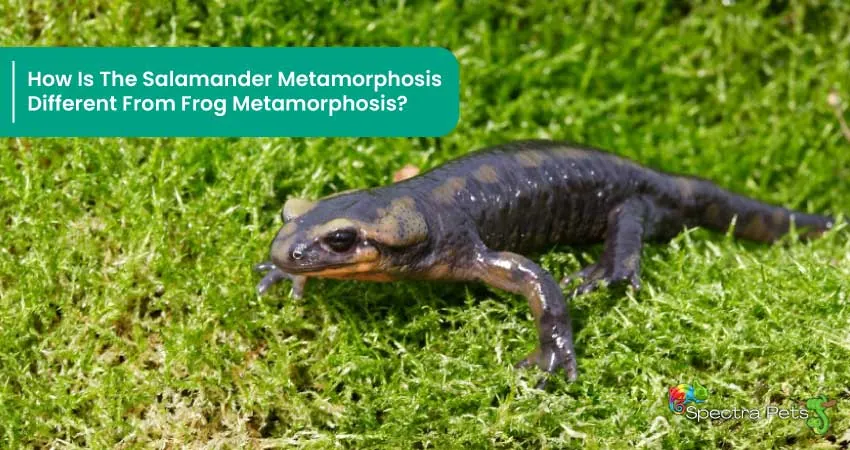
Well, both of these animals undergo metamorphosis during their life. Salamander metamorphosis and frog metamorphosis are similar in that they both involve a transformation from a juvenile, aquatic form to a mature, terrestrial form.
So, how do their transformations differ from each other?
One of the main differences is that salamanders undergo external metamorphosis, while frogs undergo internal metamorphosis. This means that salamanders go through visible changes in their appearance as they grow and develop, such as growing legs and losing their gills. In contrast, frogs undergo changes that are largely internal and not visible to the naked eye, such as the development of lungs and the absorption of their tail.
The fact that salamanders typically go through a more gradual metamorphosis—the juvenile form, known as a larva, resembles the adult form quite a bit—is another significant difference. Frogs, on the other hand, go through a more dramatic transformation, with the tadpole stage (the larval stage) having a very different appearance from the adult stage.
To Summarize
The process of salamander metamorphosis is fascinating and displays the remarkable adaptability of these animals. From the aquatic larval stage to the adult terrestrial form, salamanders undergo a series of biological and behavioral changes that allow them to thrive in their new habitat.
Through metamorphosis, salamanders showcase the incredible potential of nature’s abilities to allow animals to survive and thrive in even the most extreme of environments.
